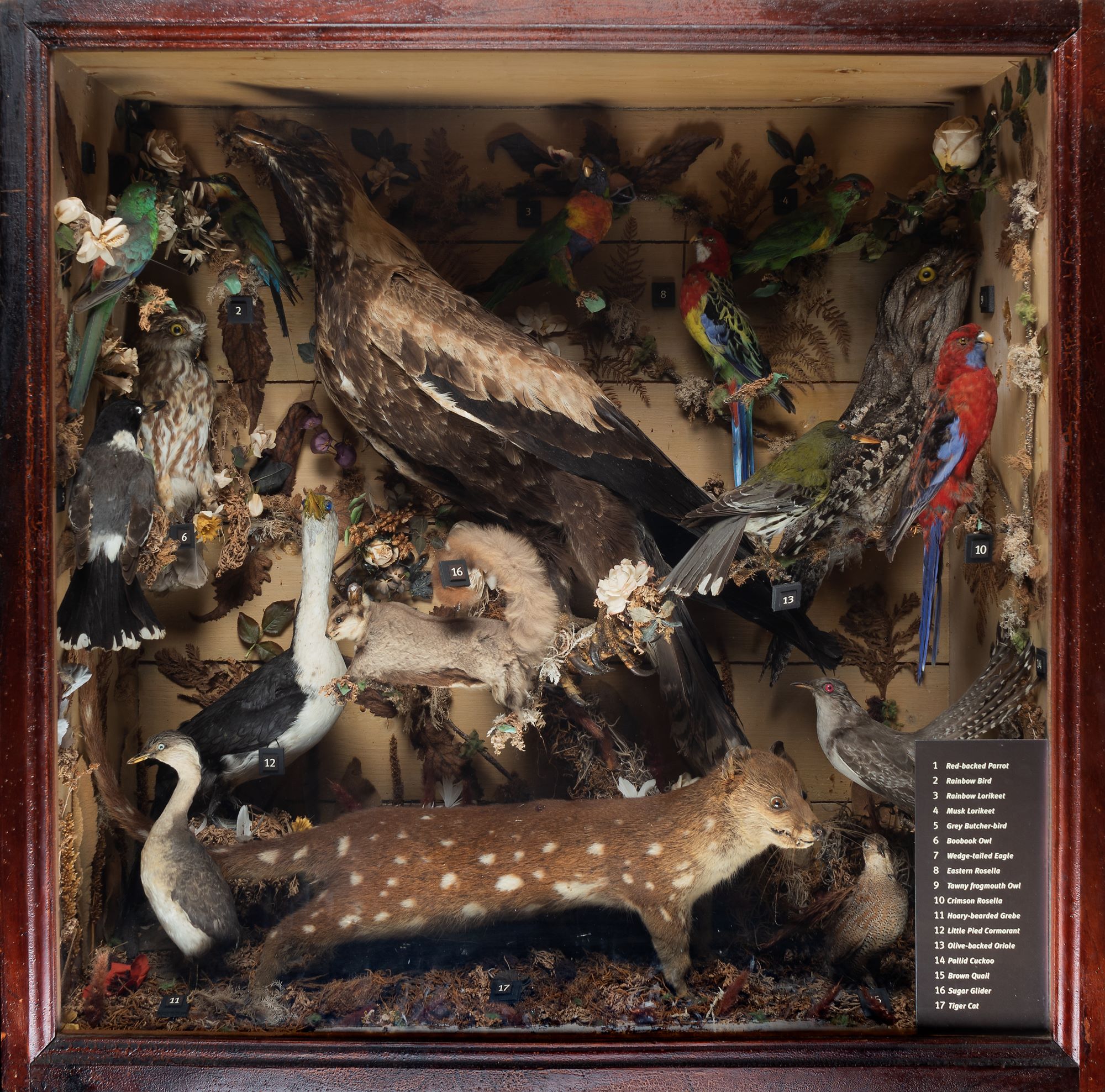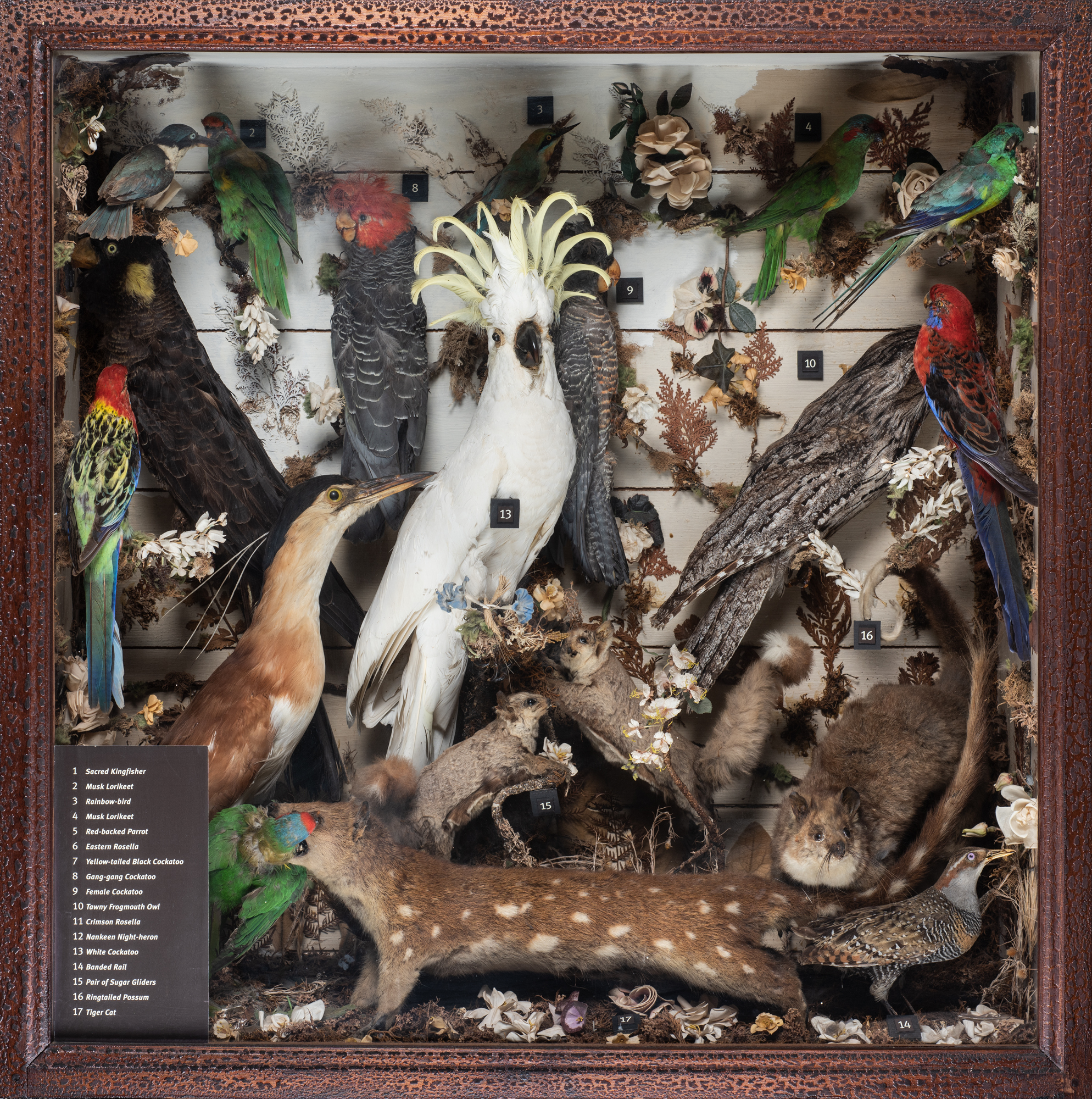Rayson and Cathcart on a stuffed quoll
Of the many reasons to travel to Castlemaine and visit CAM, this reflection is particularly delightful. Some months ago, distinguished Australian playwright Hannie Rayson was photographed in the museum standing in front of a display of taxidermy animals. Taking the photograph was her husband, equally distinguished Australian Broadcaster, Michael Cathcart. They were celebrating Rason's recent international award for her radio play about an attempt to save the Otway tiger quolls, entitled Extinction, 2013. We invited Rayson and Cathcart to write about the two modest cases of Australian wildlife, each featuring quolls in the foreground. Sadly, we were not able to provide any information regarding the provenance of these popular displays.

These two elegant cabinets graced the home of a well-to-do local family: people who had left Europe in the nineteenth century for the Aboriginal lands on the far side of the earth.
Let’s suppose they displayed the cabinets in a gracious trophy room, where antlered deer sprouted from the walls, and crossed swords glinted above the fire-place. In such a room, these stuffed animals were the spoils of conquest – a colourful reminder of who was lord and master here.
But suppose we found them in a family sitting room – where the mantelpiece was graced by a pair of china milkmaids and a pretty clock ticked away the seconds. In these more feminine surrounds, the cabinet became a lament for these native creatures whose era was coming to end – a glass tabernacle before which the Empire could shed a tear for the casualties it had inflicted.
Or perhaps these people simply loved Australian animals. And so they shot them – and preserved them in these boxes.
Cabinets like this became fashionable in the grander houses of England in the 1870s, a time when the monied classes were half in love with death: embracing tales of soldiers killed in battle, of intense young poets who had died before their time, and of maidens who leapt from clifftops to still their broken hearts.
These Victorians held extravagant funerals, built monumental graves, and even displayed photographs of their own dead babies. For such people, these cabinets were a kind of mausoleum – a crystal portal through which they gazed at the ultimate mystery. A metaphor for eternity.
The taxidermist was an artist – bringing them face to face with their own mortality.

In each cabinet, the star performer is a bird. In the first cabinet: a dramatic white cockatoo – its yellow crest frozen in the instant of arousal. In the other: a great wedged-tail eagle, the creator-totem of the Kulin people, tamed and displayed like a captured monarch.
But my eye is drawn to the quolls – perhaps because I wrote a play about their looming extinction. The colonists called them “native cats”. Until the 1860s, these spotted marsupials were a common sight in this part of the country. Many were the farmers who woke to find their chickens gutted by a party of these marauders.
By the end of the century, the native cats were disappearing – shot to the edge of extinction by the settlers, and unable to compete for chickens with the European foxes.
The quoll in the second cabinet is bizarrely disfigured. The taxidermist has stitched the creature’s pelt around a cylinder and stretched the skin so tightly that the body is elongated and its spots pulled out of shape.
It is almost as if the quoll is being sucked through a time-vortex - and into a parallel Australia. Perhaps a universe where the quolls still frolic.
Hannie Rayson and Michael Cathcart
May 2021